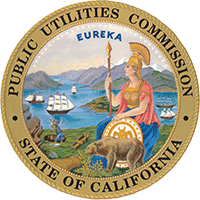Self-Generation Incentive Program (SGIP)
The CPUC's Self-Generation Incentive Program (SGIP) provides incentives to support existing, new, and emerging distributed energy resources. SGIP provides incentives for qualifying distributed energy systems installed on the customer's side of the utility meter. Qualifying technologies include wind turbines, waste heat to power technologies, pressure reduction turbines, internal combustion engines, microturbines, gas turbines, fuel cells, linear generators, advanced energy storage systems, and combined solar and energy storage systems.
The Residential Solar and Storage Equity Incentives Are Available for Reservation Beginning June 2, 2025. Available to any low-income residential electric and/or gas customer in California. LADWP will be opening applications before the end of 2025.
The CPUC’s Self-Generation Incentive Program (SGIP) offers incentives for installing paired solar and energy storage technology at low-income residential properties. These paired systems can function during a power outage, provide bill savings, and provide benefits to the grid.
The CPUC has authorized funding of $280 million for the Residential Solar and Storage Equity budget in SGIP. The best way to get started in accessing SGIP is to reach out to an installer who can help navigate the application process. Use the Approved SGIP Developer List to help find an installer in your area. (Please note that the CPUC does not endorse or recommend any of these installers.)
For the most up-to-date information on the current status of the SGIP budget and whether or not a particular budget is open or closed, please visit the SGIP home page by clicking here. To view the latest edition of the Self-Generation Incentive Program Handbook, click here.
For information on how to apply for incentives in your area, please contact the Program Administrator for your utility found at the bottom of this page.
Recent News and Quick Links
- Proceeding R.20-05-012 for all Decisions, Rulings, and Party Comments on SGIP since May 2020.
- The SGIP Program Administrators (PAs) host a quarterly Public Workshop. Notices and past presentations can be found here.
- SGIP conducts regular reports to monitor and evaluate the impact of the program and the administrative processes of the Program Administrators. The full list of reports can be found here.
- The SGIP Weekly Projects report is available here
- March 22, 2024: CPUC issued Decision 24-03-071 establishing the Residential Solar and Storage Equity budget pursuant to Assembly Bill 209 and implements other program changes.
- February 20, 2025: Resolution E-5373 finalizes the implementation of the IRA tax credit in SGIP.
- January 30, 2025: Resolution E-5362 finalizes the opening of the new Residential Solar and Storage Equity budget.
- December 19, 2025: Resolution E-5360 finalizes the new residential storage sizing rules in SGIP.
- April 11, 2022: Decision 22-04-036 establishing the SGIP Heat Pump Water Heater Program through 2025.
- January 27, 2020: Decision 20-01-021 authorizing ratepayer collections of $166 million annually for the years 2020 to 2024 to fund the SGIP and implement program revision pursuant to Senate Bill 700 and other program changes.
- September 18, 2019: Decision 19-09-027 establishing the SGIP Equity Resiliency budget and approving $10 million to support the San Joaquin Valley disadvantaged community pilot projects.
- SGIP proceeding R.12-11-005 includes links to earlier Rulings, Comments and Decisions.
Program Modification
Applicants who would like to propose new technologies or specific program modifications for consideration by the SGIP Program Administrators and the CPUC must complete the Request Form contained in the Program Modification Guideline, here. Applicants must follow the CPUC's Rules of Practice and Procedure for any filings.
Helpful Resources
Eligibility for Program
Customers must meet various criteria in order to be eligible for SGIP rebates. Please check the SGIP Handbook for the information about additional eligibility criteria and performance requirements. All applicants have one year after reserving funds to meet the program requirements which include customer enrollment in a qualified Demand Response program. Contact your Program Administrator with questions.
|
SGIP Budget |
Incentive Rate ($/kWh) |
Customer Sector |
Additional Eligibility Criteria? |
|
Residential Solar and Storage Equity |
Storage: 1,100 Solar: 3,100/kW |
Residential Customer |
Yes |
|
San Joaquin Valley Residential (available through 2025) |
1,100 |
PG&E or SCE residential customer |
Yes |
|
Equity Resiliency (available through 2025) |
1,000 |
IOU* residential or non-residential customer |
Yes |
|
Small Residential Storage (available through 2025) |
150 |
IOU residential customer |
|
|
San Joaquin Valley Non-Residential (available through 2025) |
1,000 |
SCE non-residential customer |
Yes |
|
Non-Residential Equity (available through 2025) |
850 |
IOU non-residential customer |
Yes |
|
Large-Scale Storage (available through 2025) |
250 |
IOU non-residential customer |
|
|
Generation (available through 2025) |
2,000/kW |
IOU non-residential customer |
|
*IOU customer refers to a customer of PG&E, Southern California Edison, SoCalGas, or SDG&E. Unbundled IOU customers are also customers of CCA.
Learn More
Local Program Administrators are the primary contact for information on SGIP in your area. We encourage you to reach out to them with any questions. Your Program Administrator depends on who your utility is. For customers of other utilities, including publicly owned utilities and co-ops, interested in the Residential Solar and Storage Equity budget, refer to this list for the Program Administrator for your application.
- Los Angeles Department of Water and Power (LADWP)
- Email: sgip@ladwp.com
- Pacific Gas and Electric Company (PG&E)
- Website: www.pge.com/sgip
- Email: selfgen@pge.com
- San Diego Gas & Electric (SDG&E) – Via Center for Sustainable Energy (CSE)
- Southern California Edison (SCE)
- Website: www.sce.com/SGIP
- Email: SGIPGroup@sce.com
- Southern California Gas Company (SoCalGas)
Self-Generation Incentive Program
RELATED PROGRAMS
For income qualified households, statewide programs:
CARE and FERA Energy BIll Discounts
Energy Savings Assistance Program Free Efficiency Services
SwitchIsOn.org Heat Pump Water Heaters and HVAC System Rebates
Solar On Multifamily Affordable Homes (SOMAH) Program Solar Incentives
For income qualified households in disadvantaged communities only:
Disadvantaged Community Single Family Solar Homes (DAC SASH) Program Solar Incentives
Disadvantaged Community Green Tariff (DAC-GT) Bill Credits